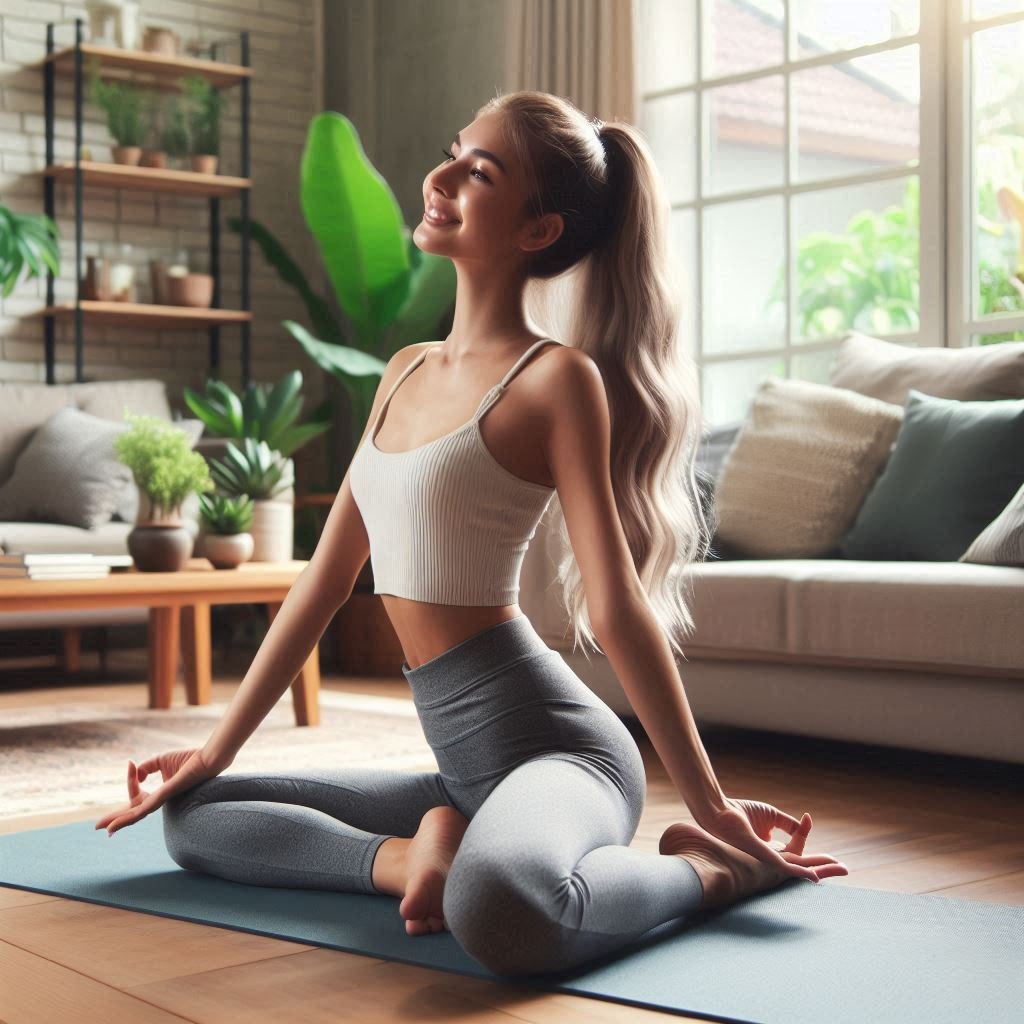
Patanjali’s Ashtanga Yoga has eight limbs(parts). In my earlier article, Yama and Niyama have been described briefly. Yama and Niyama are external limbs of Yoga; these are to be practised while leading social life. The rest six limbs – Asana, Pranayama, Pratyahar, Dharana, Dhyana and Samadhi are internal limbs of Yoga. While practicing these six limbs one concentrates one’s mind on true self and realises the divine truth. In this article Asana and Pranayama have been described.
Asana(posture)
Asana is a posture of the body by which the body rests on a plane surface. For different actions man chooses different postures. For Yoga one should choose a comfortable posture by which one may concentrate mind on true self. For choosing a posture Patanjali describes – posture should be motionless and comfortable(II.46). So in Yogasana one rests one’s body in a comfortable and static posture so that all other succeeding limbs are practiced easily and one reaches upto the last limb i.e. Samadhi.
Different Schools of Yoga teach different Yogic exercises in the name of Yogasana. These Yogasana should be included in Tapa, a type of Niyama. In Tapa a practitioner imparts warmness or heat to the body through the practice of Yogic exercises and thereby the body becomes strong and diseaseless. Tapa and its exercises is external limb of Yoga; however the third limb of Yoga i.e. Asana is internal limb. Through Yogasana which involves exercise of the body, one cannot be motionless or feel comfortable. So in these postures one cannot enter into Samadhi. In true Asana rests one’s body comfortably and rises up above the gross mind, body and senses and realises the true self.
So for a motionless and comfortable Asana one should lie on a plane surface on one’s back with hands and legs streched. This is called Sukhasana. In this posture all the six internal limbs of Yoga may be practiced well. A human being may be partitioned into four – body, Prana(breath), mind, and bliss(soul). If any one of these is brought under control, others will come under control automatically. In Asana, body is kept motionless and as a result Prana(breath) and mind are brought under control. When everything is brought under control and becomes motionless, one feels the bliss of soul or true self.
Pranayama(breath control)
For common understanding Prana(life) is breath or breathing air. But in reality it is more than the air we breathe. It is the life force that moves out and moves in and these movements are expressed through the exhalation and inhalation of air. When this life force goes outside it mingles with the universal life force of all living beings and when it moves in, it touches every living cell in the body. The body functions because of this life force. The energy of this life force is unending. Through our numerous births this Prana works from birth till death. Body does not depend upon food solely, but it depends upon Prana solely. There are people who do not take food for months and years; but still they are able to work and live.
In reality body, Prana and mind are one. When any one of these three becomes motionless, the other two become motionless. In Sukhasana when the body is kept motionless for half an hour, Prana and mind become motionless. When Prana is motionless there is no inhalation or exhalation or breathing takes place in a very subtle manner. This is Pranayama. Patanjali teaches – after one rests in Asana, there is cut off in the movements of inhalation and exhalation and this cut off is Pranayama(II.49). This can be scientifically explained also. When the body is in motion, the rate of metabolism in the body is higher and so one breathes in quick succession. Conversely whe one is in rest the rate of metabolism is less and one breathes after a long pause. Again, when mind is restless, one breathes quickly and when mind is calm, one breathes normally.
Different Schools of Yoga, which teach to control breathing forcibly, only follow unscientific and impure Pranayama. By forcibly withhelding breath, one keeps carbon dioxide inside for a longer period and this may be fatal to the body cells. In pure and true Pranayama one has to do nothing. One should lie in Sukhasana and keep mind on the movement of breath across the nostrills. In this way body, mind and Prana become motionless naturally and become one. In Pranayama one concentrates mind and gives rest to this overworked Prana.
Author is a desciple of Late Munishvar Shiv kumar Shastri and practices Yoga as taught by him. His aim is to spread true spiritualism and yoga. Those who want to read more about spiritualism based on the Upanishads and Yoga based on Patanjali’ Yogasutra may go through his book ‘the purest interpretation of spiritualism and yoga’ published through http://www.lulu.com , [http://www.premansuchanda.com]




